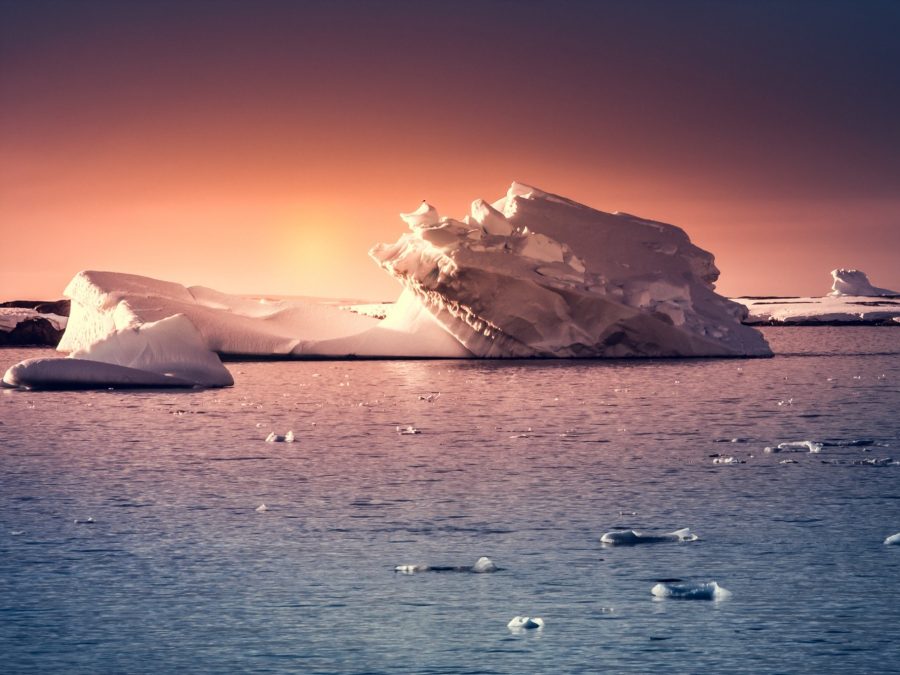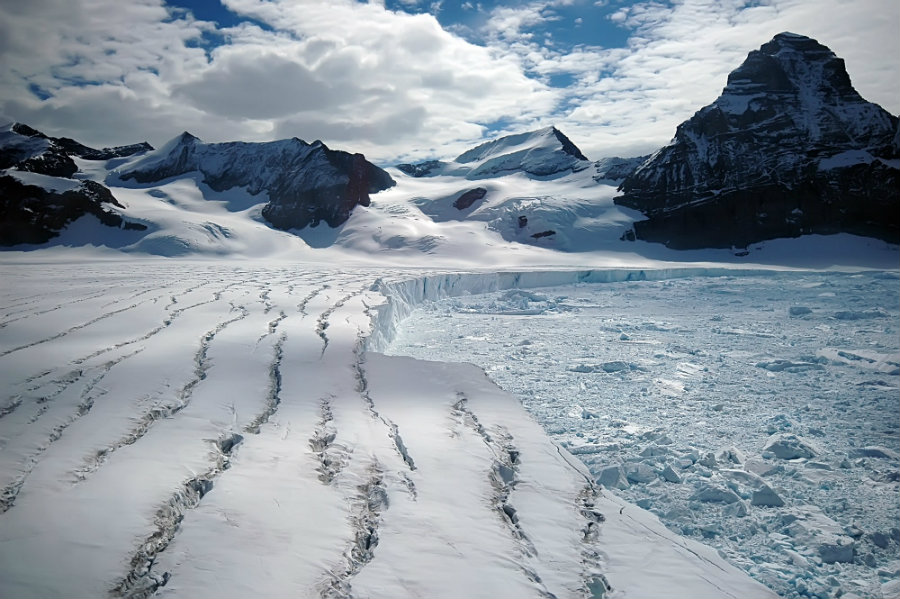A massive iceberg calved away days ago from the Larsen C Ice Shelf in Antarctica, causing scientists to analyze the consequences it will have on the planet. Scientists believe the iceberg detached Larsen C Ice Shelf sometime between July 10 and July 12.
Ice shelves surround almost 75 percent of the Antarctic ice sheet. Larson C is a floating ice shelf on the east side of the Antarctica Peninsula and is its fourth largest ice shelf. The iceberg, dubbed A-68, weighs one million metric tons, is over 2,200 square miles and 1,100 feet thick.

BBC reported today that satellite images from NASA show the gap between the calving and the floating Larsen C Ice Shelf berg from which it calved is widening. As of now, climate experts believe A-68 is behaving as expected.
Floating massive iceberg won’t contribute to sea level rise
A recurrent question ever since the iceberg drifted away days ago, is whether it would raise sea levels or contribute to a sudden acceleration in the melting of the continent’s massive ice cap. However, UC Berkeley Professor of Ocean, Earth and Climate Science Kurt Cuffey believes if won’t affect either, as the Larsen C is a floating ice sheet.
“It’s drawing attention because of size, because it’s a spectacular event, but it was already floating on the ocean when it broke off,” said Cuffey, as reported by Berkeley’s California Magazine. “That means it won’t directly contribute to sea level rise. If it had been anchored on land or the sea bottom, then some degree of sea level rise could be possible.”
Cuffey noted the reason is interesting is because climate change has already destroyed former Larsen A and Larsen B ice shelves. But as opposed to Larsen C, those ice shelves are farther north, where temperatures are usually warmer than southern parts of Antarctica. Plus, both Larsen A and B calving events happened in January, typically the continent’s warmest month.

Sea Notably, he thinks when the Ross Ice Sheets begins disintegrating, it will have severe impacts on the planet.
“Much of that is grounded, not floating ice, meaning destruction will cause dramatic sea level rise,” said Cuffey. “That will happen when summertime temperatures in Antarctica reach five degrees C, a level that corresponds to a global temperature increase of two to three degrees.”
The professor added that a massive ice sheet collapse in Antarctica would cause sea levels to rise five meters or more, which would cause Miami, London, parts of Bangladesh, and the Netherlands to disappear.
Scientists estimate A-68 iceberg will ultimately end up in the Atlantic Ocean
A group of scientists who had been monitoring the cracking ice in Larsen C published a study in April where they predicted how the iceberg would behave following its detachment. The study included a simulation of berg movement based on data from 7,000 icebergs seen in Antarctica. However, A-68 is one of the largest icebergs ever.
There are four possible ways through which the berg can travel, depending on their point of origin. Researchers of the new study believe A-68 should move up the eastern coast of the Antarctic Peninsula, heading from the Weddell Sea towards the Atlantic Ocean.
“It will most likely follow a northeasterly course, heading roughly for South Georgia and the South Sandwich Islands,” Dr. Thomas Rackow at the Alfred Wegener Institute and Helmholtz Centre for Polar and Marince Research, told BBC. “It will be very interesting to see whether the iceberg will move as expected, as a kind of ‘reality-check’ for the current models and our physical understanding.”
Big calving events have led to discovery of new species
When A-68 detached from Larsen C, it reduced the ice shelf’s size by more than 12 percent. Researchers suggest the remaining part of the ice shelf will likely be more unstable as it floats around.
Chris Shuman, a glaciologist at NASA’s Goddard Space Flight Center, Oceans and Ice Branch, noted the remaining Larsen C Ice Shelf is held in place by two pinning points, the Gipps Ice Rise to the south and the Bawden Ice Rise to the north.
Shuman told Environmental News Service he doesn’t see any near-term signs the detachment event is going to lead the collapse of the Larsen C ice shelf, but he added they would be watching closely for signs of further changes.
BBC reported there are several cracks north of the Gipps Ise Rise, but they’ve remained static for a long time, as they are held in place by a portion of soft, malleable ice.
Researchers have also shared their interest to study the seafloor that will soon be uncovered when A-68 finally moves entirely clear of the Larson C Ice Sheet, as previous big calving events have led to the discovery of new species.
Source: California Magazine
